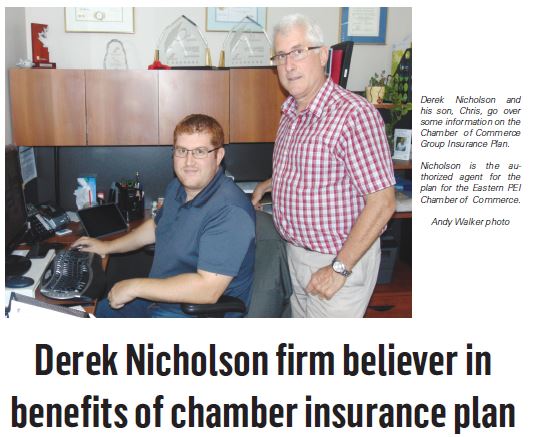
by Chris Nicholson | Nov 2, 2017 | Blog, Group Insurance
Derek Nicholson is a firm believer in the value of insurance and loves working with his wife and son to offer the Chamber of Commerce Group Insurance Plan to chamber members and their employees. He knows better than most how quickly life can change. On October 29,...
by Chris Nicholson | Jul 21, 2017 | Blog, Group Insurance
Explore Eastern PEI a Magazine published by The Eastern Graphic in partnership with the Eastern PEI Chamber of Commerce featured Morley Annear LTD a trucking company in Eastern PEI that finds the Chamber Plan to be a great fit for their employees! On any given day...

by Chris Nicholson | Jun 26, 2017 | Group Insurance, Office Health
Improve Morale with an Employee Assistance Program (EAP) What if there was a way to help your employees deal with serious issues before they escalate into problems that keep them from work, or even turn into a disability claim? Making an employee assistance program...
by Chris Nicholson | Apr 28, 2017 | Blog, Office Health
You’ve probably heard the phrase “sitting is the new smoking”. Study after study has shown the more you sit, the poorer your health, no matter how fit you are. We live in a society where we go from the car to our chair at work, to the dinner table, to parked on the...
by Chris Nicholson | Apr 26, 2017 | Blog, Business Technology
Everything you do these days seems to require a password. Unfortunately, many people don’t realize the potential ramifications of not creating a strong enough lock on their information. Identity theft, credit applications in your name, and access to your financial...
by Chris Nicholson | Feb 7, 2017 | Blog, Group Insurance, Insurance Rules
When your firm offers employee disability benefits, it’s worth thinking about the tax consequences. The choices you make will determine whether employees will have to pay income tax on disability benefit payments they receive from your group plan. If you, the...



